When embarking on the exciting journey of real estate development, one of the most pressing questions that often arises is, “How much does it cost to build apartment complex?” The prospect of constructing an apartment complex is not just a financial endeavor but a multifaceted venture that involves a multitude of considerations, from location and design to materials and labor. How Much Does It Cost To Build Apartment Complex?
In this discussion, we will explore the key factors that contribute to the cost of building an apartment complex, shedding light on the intricacies of this significant undertaking and helping you better understand the expenses involved in bringing your real estate vision to life.
Understanding the Intricacies of Apartment Complex Construction Costs
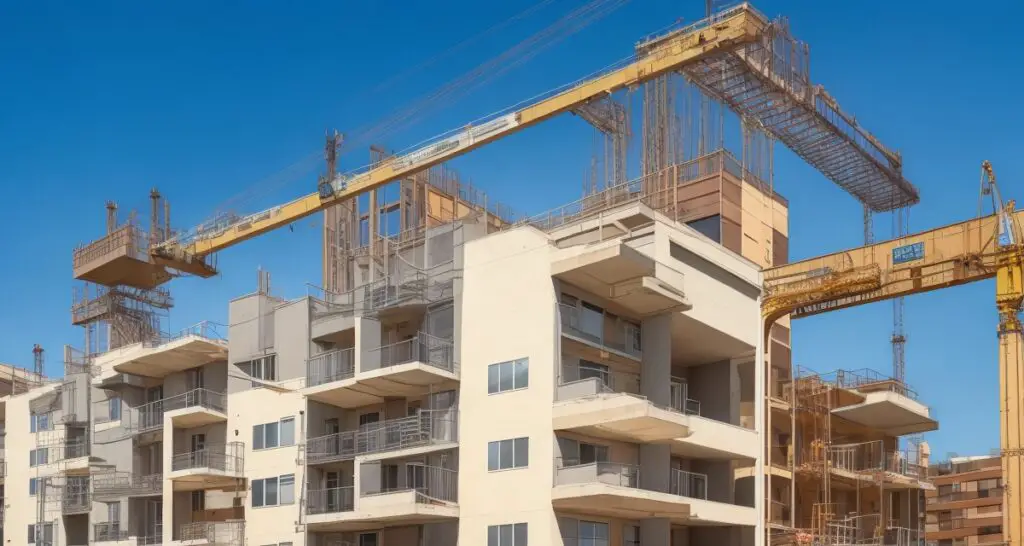
Throughout the United States, the cost associated with constructing an apartment complex is an average of $398 per square foot. This figure holds profound significance, as it paints a financial landscape for potential investors and property developers. It is essential to recognize that a 100-unit apartment complex, characterized by units of average size, would incur a total cost of approximately $37 million for its construction.
Nevertheless, beneath this seemingly straightforward calculation lies a multitude of intricate factors that exert their influence upon the final price. These factors are essential for anyone venturing into the realm of apartment complex construction to understand thoroughly.
Architectural Complexity:
The first factor of utmost significance is the complexity of the architectural design. Apartment complexes can vary dramatically in terms of structural intricacies, from simple, functional designs to architecturally intricate and aesthetically pleasing buildings. The more complex the design, the higher the cost, as intricate designs necessitate more time and specialized materials.
Level of Finish:
The level of finish is another vital determinant of cost. From basic, utilitarian finishes to high-end luxury touches, the choices made in terms of interior and exterior finishing materials significantly impact the overall expense. A more luxurious finish elevates both the cost and the perceived value of the complex.
Size and Scale:
Size is a crucial component that cannot be overlooked. Larger apartment complexes inherently require more materials and labor, thus escalating costs. Smaller-scale projects, on the other hand, tend to be more cost-effective.
Regional Variations:
Lastly, and perhaps most importantly, the geographical location where construction occurs plays a pivotal role. Construction costs can vary significantly from one region to another due to factors like labor rates, availability of materials, and local regulations.
To embark on the journey of building an apartment complex, one must take into account these intricate elements, each contributing uniquely to the final construction cost. By delving into these factors, investors and developers can make informed decisions, ensuring that their vision aligns seamlessly with their budget.
Welcome to Your Apartment Complex Construction Estimator
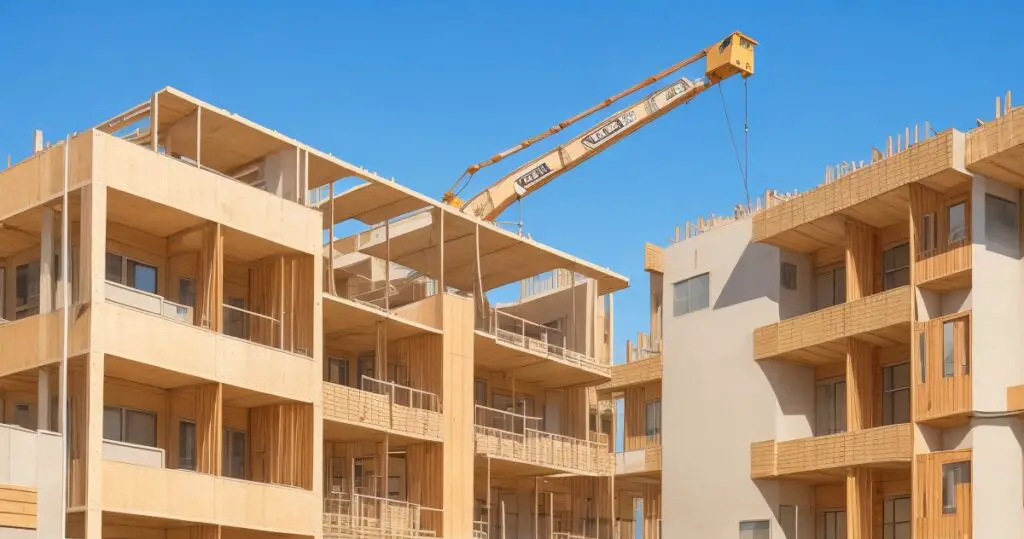
We are truly delighted to introduce you to this valuable tool designed to help you estimate the expenses associated with creating your dream apartment complex. This estimator is tailored to cater to your specific needs, and all it takes is inputting the number of units and the average unit size to gain priceless insights into your project’s potential costs.
Our user-friendly calculator has been meticulously crafted to empower you in making well-informed decisions for your apartment complex development. It serves as your trusty companion in shaping a budget that seamlessly aligns with your vision, ensuring a smooth and efficient construction journey.
To obtain a reliable estimate, simply provide your project details, and our calculator will promptly deliver the figures you need. We are here to support you in every step of your construction journey, making the financial aspects of your project clear and manageable. Whether you’re an experienced developer or just starting out, our tool promises to be an invaluable resource.
We acknowledge that building an apartment complex is a significant endeavor, and our primary goal is to make your journey as smooth and hassle-free as possible. Please feel free to explore the calculator and plan your project with confidence. If you ever have questions or need further assistance, do not hesitate to reach out to our friendly team of experts. We are here to accompany you throughout this exciting venture. Happy calculating!
Is this conversation helpful to you thus far?
Demystifying Multifamily Construction Expenses:

For those venturing into the world of multifamily development, the intricacies of construction costs are an undeniable focal point throughout the entire project journey. These costs are no stranger to causing concern, particularly due to the significant surge they experienced in 2020 and 2021, owing to pandemic-induced setbacks, labor shortages, and supply chain disruptions.
As we step into 2023, the National Multifamily Housing Council anticipates that construction costs will continue their ascent, albeit at a considerably gentler rate. This is indeed a favorable turn of events.
However, given the elusive nature of construction costs (often prone to unexpected spikes during a project), it is absolutely crucial to secure a precise estimate. This knowledge equips you with the power to determine the precise amount you should allocate in your construction budget, thus ensuring a smoother and more predictable project trajectory.
Navigating the multifamily construction landscape becomes more manageable when you have a clear understanding of these financial aspects. If you have any questions or require further guidance on estimating and managing construction costs, please do not hesitate to reach out. We’re here to assist you in your journey and ensure your construction project proceeds with confidence and financial clarity.
Unpacking the Escalation in Apartment Complex Construction Costs:
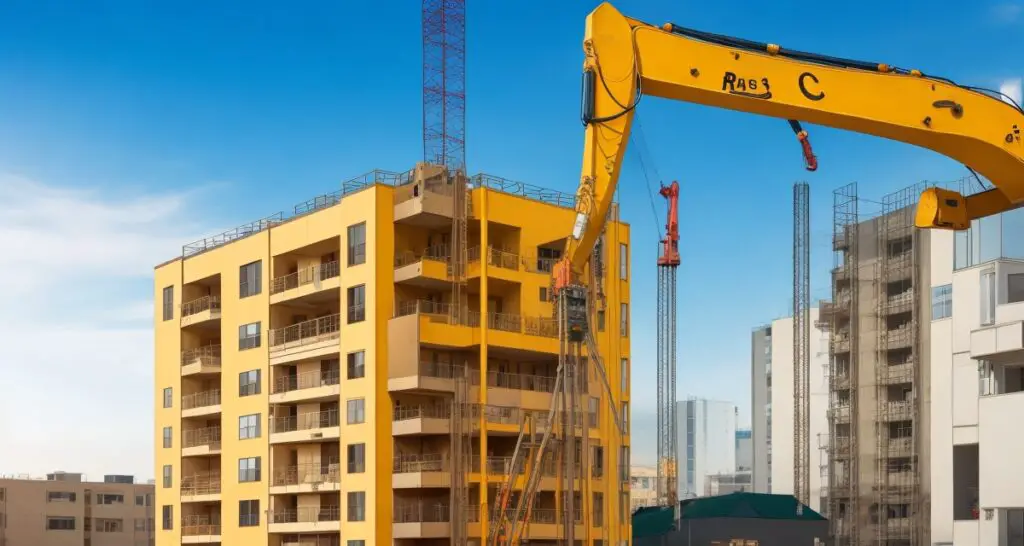
Within the multifamily construction landscape, a host of challenges has emerged, driven primarily by the unexpected upsurge in interest rates and the relentless ascent of construction costs. The ramifications of this surge are particularly pronounced in the affordable housing sector, where costs have witnessed an average increase of approximately 30%. Projects that had hitherto benefited from low-income housing tax credits since 2019 are now grappling with unforeseen financial shortfalls, prompting a proactive search for supplementary funding sources to bridge these unexpected gaps.
In response to these headwinds, developers have exhibited a prudent approach by becoming more discerning in their project choices. To counter the mounting costs, there has been a discernible shift towards forging collaborations and partnerships, particularly with municipalities offering favorable financing terms. While some state Housing Finance Agencies (HFAs) have extended Credits and soft funding opportunities, it is essential to acknowledge that these forms of support may not entirely address the budgetary challenges at hand. This underscores the industry’s pressing need for adaptability and the exploration of innovative solutions.
Amidst these challenges, we aim to be your guide and support system, offering valuable insights and expertise to assist you in navigating this evolving landscape. If you have any questions or require further information on addressing rising construction costs, please do not hesitate to reach out. We are here to facilitate your journey and ensure your multifamily projects are approached with resilience and innovative thinking.
The Art of Estimating Construction and Development Costs:
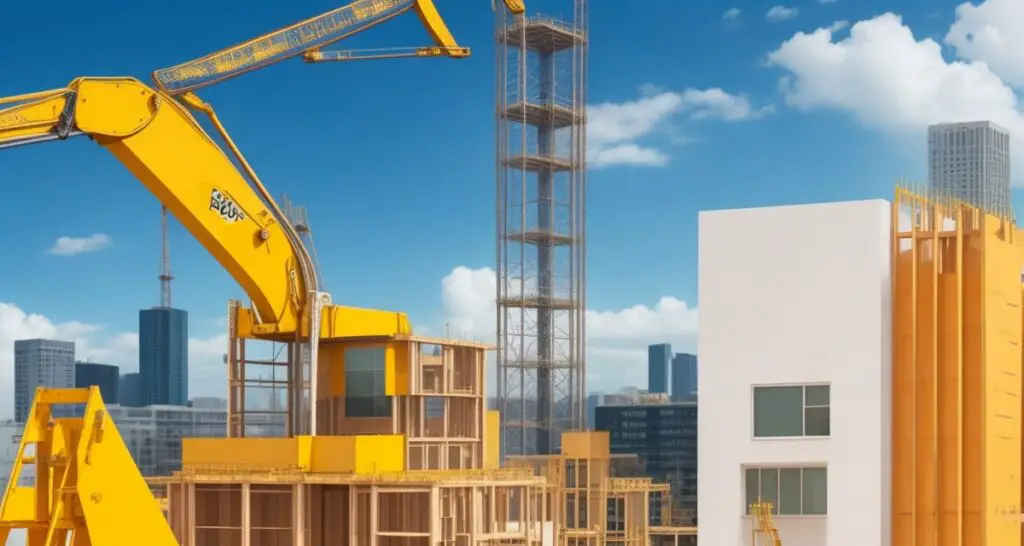
In the early stages of a multifamily or commercial development venture, developers traditionally draw upon historical data gleaned from prior projects, aiming to factor in both resemblances and distinctions in their estimates. This approach mirrors the method employed by an appraiser who evaluates other properties through the sales comparison technique. Nevertheless, due to the ever-evolving economic landscape, the quest for an exact budget can prove somewhat elusive, particularly in the project’s nascent phases.
This elusiveness partly stems from the fact that, in the initial phases of a development endeavor, developers, contractors, and architects often employ simplified, do-it-yourself (DIY) cost estimation methods. In fact, readily available “plug-and-play” Excel templates for construction cost estimation can be found online with ease. These templates generally furnish developers with a ballpark cost estimate, provided that they input precise and comprehensive information.
While these DIY spreadsheets prove invaluable for estimation, a significant majority of larger projects typically engage the services of a professional construction cost estimator as the project progresses. Although this may entail an investment, the benefits are manifold, as obtaining an accurate budget estimation prior to commencing construction frequently translates into substantial cost savings for developers in the long term.
Should you have any inquiries or require Guidance on the intricacies of cost estimation in construction and development, please do not hesitate to reach out. We are here to support your project and assist you in making well-informed decisions, ultimately ensuring your financial success throughout the journey.
Discerning Hard and Soft Costs in Multifamily Construction
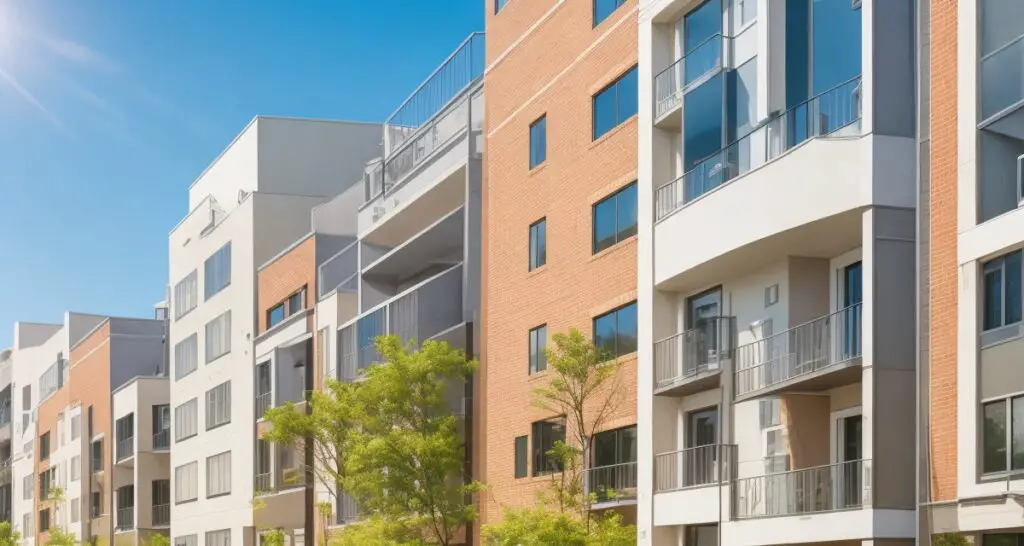
When embarking on the endeavor of estimating or analyzing multifamily construction expenses, it’s pivotal to comprehend the fundamental disparity between hard and soft costs. Hard costs encompass all the tangible expenditures associated with physically constructing a building, including foundational work, roofing, landscaping, appliances, and similar components. In contrast, soft costs predominantly consist of intangible expenses, encompassing permit fees, architectural expenses, legal fees, interest and fees associated with construction loans, and other akin outlays.
On average, a property’s development costs can be broken down as follows: approximately 37% for hard construction costs, 24% for soft costs, and 19% allocated to land acquisition expenses, which may also encompass demolition costs if required. The remaining 25% is typically directed towards investors, offering them equity returns for their involvement.
In numerous scenarios, developers oversee apartment and condo construction projects while charging a specific fee. However, they do not typically provide the majority of the capital. Instead, developers often collaborate with a consortium of investors who finance a significant portion of the project. The fees charged by developers can exhibit variance but are commonly set at 5% of both soft and hard development costs. If the developer is also responsible for procuring the project’s land, they may append an Acquisition fee, typically amounting to 1-2% of the purchase price.
Should you seek further clarification or have inquiries regarding the intricacies of hard and soft costs in multifamily construction, please feel free to contact us. We are here to provide you with the information and guidance you require for making well-informed decisions as you embark on your multifamily development journey.
Navigating the Diverse World of Housing Options: Affordable Housing vs. Luxury Apartments

When considering apartment construction, it’s essential to explore the wide spectrum of housing options. Two prominent categories that often capture attention are affordable housing and luxury apartments, each offering unique features. What’s intriguing is that, in some instances, affordable housing can also encompass luxurious elements!
Construction costs for both categories tend to be fairly similar, with the distinction lying in the inclusion of “luxury” amenities. Affordable housing typically offers lower rents, tailored to accommodate income restrictions, and certain cities have instituted inclusionary zoning policies.
These policies serve to either mandate or incentivize private developers to allocate a portion of their units at rents below the market rate, particularly in sought-after neighborhoods. It’s important to note that the development of affordable housing frequently comes with tax incentives, making it an attractive prospect for developers committed to providing accessible and quality housing solutions.
The Vital Role of Architects in Multifamily Development
In the multifamily development landscape, the collaboration between various professionals is instrumental in bringing a vision to life. While contractors oversee the physical construction and the assembly of skilled workers, architects are entrusted with the crucial task of crafting meticulous plans for the entire development. It is no exaggeration to say that the success of a building hinges upon the quality of its design, underscoring the paramount importance of selecting a reputable architect.
The multifaceted responsibilities of an architectural firm encompass:
Creating an Initial Plan and Budget:
Architects are at the forefront of establishing the project’s initial blueprint and budget, setting the foundation for the development’s financial viability.
Developing a Comprehensive Work List and Plan Outline:
They meticulously craft a work list and plan outline, outlining every aspect of the project with precision and foresight.
Drafting Schematic Designs and Floor Plans:
Architects bring the project to life through the creation of schematic designs and detailed floor plans, providing a visual representation of the development.
Assisting Developers in Contractor Selection:
They play a pivotal role in helping developers evaluate contractor bids and make informed decisions when selecting the right contractor for the job.
Navigating Regulatory Approvals:
Architects liaise with relevant agencies to review and secure necessary permits, including general construction permits. It’s important to note that some permits may later become the responsibility of the contractor, but architects facilitate this critical process.
Collaboration with Structural Engineers and Planning Agencies:
Architects engage in close collaboration with structural engineers and planning agencies, ensuring that the development adheres to safety standards and regulatory requirements.
Monitoring Contractor Progress and Payment Requests:
Throughout the development’s execution, architects vigilantly monitor the contractor’s progress and facilitate the payment process, contributing to the project’s overall success.
The architect’s role is a linchpin in the multifamily development journey, guiding the project from concept to reality and ensuring that every facet aligns seamlessly with the vision. Their expertise and attention to detail are indispensable, making them a valuable asset in the pursuit of creating exceptional living spaces.
The Crucial Role of Contractors in Multifamily Development
In the multifamily development arena, the selection of the right contractor is paramount to the success of your project. Contractors are the stewards of the day-to-day operations at the construction site, and their competence can significantly influence the project’s outcome.
Opting for a capable contractor can lead to a smooth project execution, keeping it on track and within budget if the initial construction cost estimate is accurate. Conversely, making an ill-informed choice could result in delays and cost overruns, which can be particularly challenging, given that most multifamily development projects rely on construction loans with strict repayment timelines.
The comprehensive responsibilities of a contractor encompass:
Material Procurement and Service Sourcing:
Contractors are entrusted with the responsibility of sourcing and procuring all necessary materials and services, overseeing the project from inception to completion.
Securing Relevant Permits:
They diligently navigate the process of obtaining all required construction and utility permits, ensuring compliance with regulatory standards.
Cost Reduction and Timeline Enhancement:
Contractors collaborate closely with the owner/developer and the architect, offering expert advice on optimizing cost-efficiency and project timelines without compromising quality.
Subcontractor Selection and Supervision:
They play a pivotal role in the selection, hiring, and supervision of subcontractors, ensuring that the project’s various components seamlessly come together.
Post-Construction Cleanup:
Upon the project’s completion, contractors take charge of the property’s comprehensive cleanup, ensuring that it is left in impeccable condition.
Contractors are typically responsible for a wide array of tasks, including:
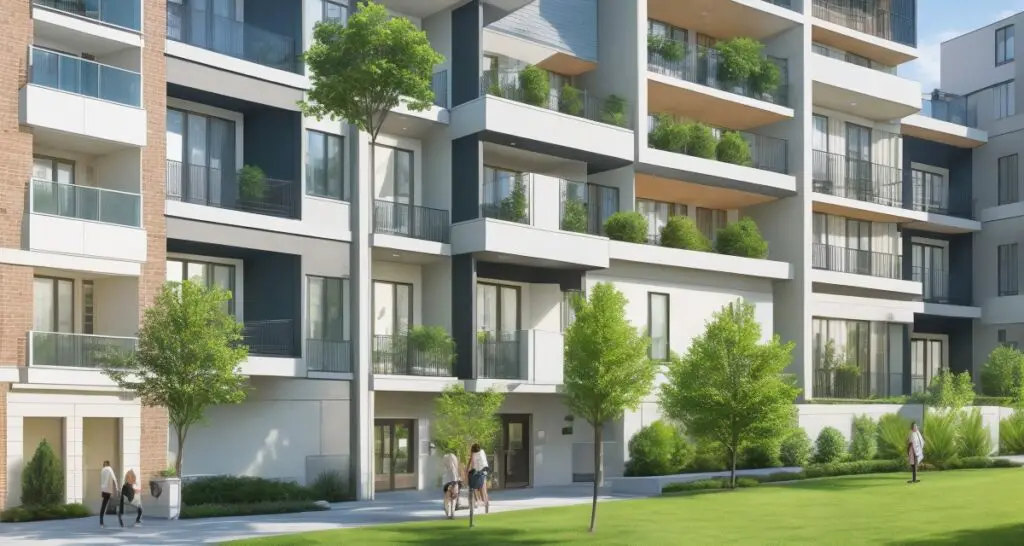
Sourcing and installing essential building elements, such as bath fixtures, plumbing fixtures, plumbing rough-ins, and connections.
- Overseeing the installation of cabinets, countertops, and built-in appliances.
Managing HVAC and insulation for both the building and individual units.
Coordinating the installation of carpets and flooring.
Handling exterior finishes and trim.
Managing insurance matters and overseeing site/property cleanup.
Securing permits, managing utility work, and providing plans and specifications for permitting.
Overseeing the installation of lighting fixtures, painting, and interior wall finishes.
Managing the installation of doors, windows, roofing, and wiring.
Ensuring the completion of rough and finish carpentry, along with hardware installation.
Overseeing property excavation, foundation work, piers, and flatwork.
The role of contractors is undeniably central to the multifamily development process, and their expertise is a cornerstone in the journey to creating exceptional living spaces. Their effective management and coordination ensure that the project progresses seamlessly, culminating in the realization of a well-executed, high-quality development.
Understanding and Managing Payment Risks for Contractors
Participating in private construction projects inherently involves certain risks. Project owners may encounter financial challenges, potential bankruptcy could halt progress, and even payment disputes elsewhere within the apartment project may disrupt the cash flow of subcontractors or general contractors (GCs). To safeguard their interests, contractors and subs must proactively manage these risks.
The most crucial step for contractors and subs to protect their businesses during apartment complex construction is to secure their lien rights. This involves sending preliminary notices and notices of intent to lien while adhering to critical deadlines established by their state. By doing so, contractors gain the ability to file a mechanics lien.
In the event of delays or complications during the apartment complex project, contractors and subs who have safeguarded their lien rights can initiate a lien against the property. This lien can limit the property’s liquidity and significantly impede the process of securing further financing, thereby compelling the property owner to engage in discussions with the unpaid contractor before the project can progress smoothly.
The Significance of Grasping Multifamily Construction Expenses
Whether you’re embarking on a grand real estate development endeavor or considering a passive investment in apartment construction or revitalization, having a comprehensive understanding of multifamily construction costs is paramount.
While cost dynamics exhibit notable variations from one locality to another, gaining insights into both national and local cost averages related to contractors, subcontractors, architects, materials, and other essential elements is instrumental. This knowledge empowers you to avoid the risk of excessive expenditure on any facet of your project. Equally significant is the ability to ensure you align with a developer who prioritizes effective budget management, safeguarding your investment’s viability and success.
FAQS Of How Much Does It Cost To Build Apartment Complex?
What is the average cost to build an apartment complex?
The average cost to build an apartment complex can vary significantly depending on factors like location, size, and design. On a national average, it’s approximately $350 per square foot in 2023. For a 100-unit complex with 1,000 square foot units, that’s around $35 million.
What factors influence the cost of constructing an apartment complex?
Answer: Several factors affect the cost, including the location’s market, the complexity of the design, size, quality of finishes, and local construction costs. For instance, major cities tend to have higher construction costs than rural areas.
Are there regional differences in apartment complex construction costs?
Answer: Yes, there are significant regional differences. Major primary markets like Manhattan or San Francisco may have costs exceeding $450 per square foot, while secondary markets like Phoenix or Orlando could range from $300 to $350 per square foot. Tertiary/rural markets may fall between $250 and $300 per square foot.
What’s the significance of including “unusable” square footage in cost calculations?
Answer: Including unusable square footage is crucial for accurate budgeting. Unusable space includes areas like amenity spaces, lobbies, elevator shafts, and stairwells. About 15% of a multifamily building’s space may be unusable, and it’s important to account for this when estimating costs.
How do construction costs vary with the size of the apartment complex?
Answer: Construction costs per unit tend to decrease as the size of the apartment complex increases. Smaller complexes might have higher costs per unit compared to larger ones. For example, a 4-unit complex may cost $1.2 to $1.6 million, while a 200-unit complex could range from $50 to $100 million.
Conclusion
The cost of building an apartment complex varies based on several factors, including location, size, and design. On average, in 2023, it’s approximately $350 per square foot in the United States. Accurate budgeting, considering regional differences and unusable square footage, is essential for a successful project.
Moreover, understanding the role of architects in the planning process and how contractors and subs can protect their payments through lien rights is crucial for anyone involved in apartment complex construction. These factors collectively contribute to a well-managed and cost-effective multifamily development project.

